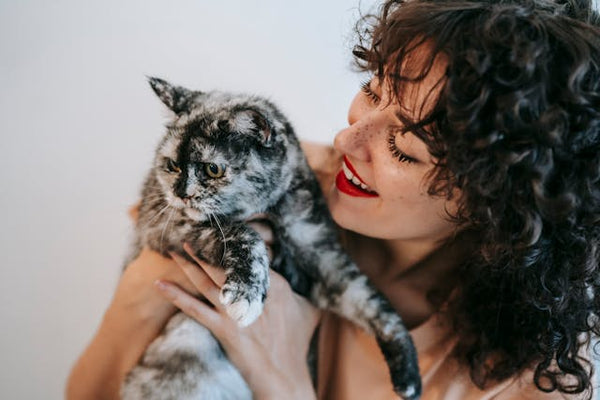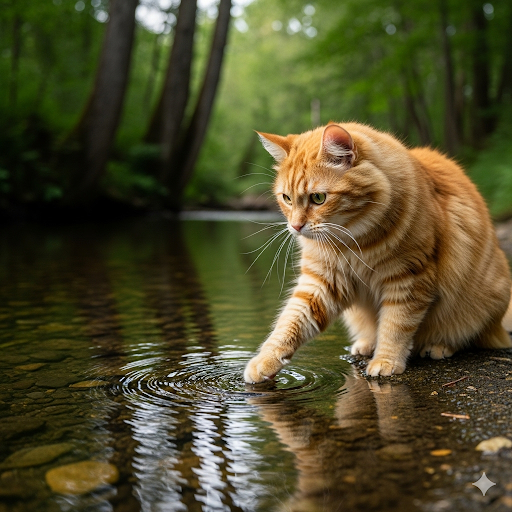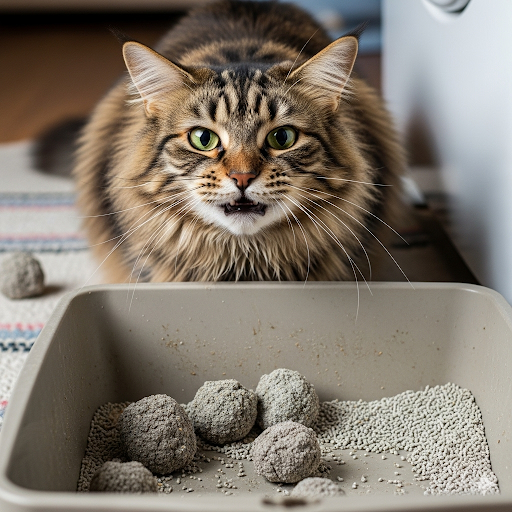
Cats, those furry bundles of curiosity and cuddles, captivate us not just with their purrs and playful antics, but also with their mesmerizing eyes. From the piercing emerald green to the captivating amber, and the otherworldly blue, feline eyes come in a dazzling array of colours. But what exactly determines these captivating hues? Buckle up, cat lovers, as we delve into the fascinating science behind a cat's eye colour!
Melanin: The Mastermind Behind the Palette
The key player in this colour spectacle is a pigment called melanin. Melanin is produced by specialized cells in the iris, the coloured part of the eye, called melanocytes. The amount and type of melanin present determine the final eye colour.
- High Melanin: High levels of melanin result in warm tones like copper, gold, and deep orange. These colours are most commonly seen in breeds like Persians and Bengals.
- Low Melanin: Less melanin leads to cooler colours like green, hazel, and yellow. These shades are prominent in breeds like Shorthairs and Abyssinians.
- No Melanin: A complete absence of melanin results in blue eyes. However, contrary to popular belief, blue eyes in cats aren't due to pigment, but rather a fascinating phenomenon of light scattering!
The Science Behind the Stunning Blue
Blue eyes in cats, unlike humans, are not caused by a specific blue pigment. Instead, the iris in these cats lacks melanin, leaving behind a stroma, a clear layer within the iris. When light enters this stroma, it scatters, reflecting the shorter blue wavelengths back out, giving the eyes their captivating blue appearance. This light scattering phenomenon is similar to how the sky appears blue.
Kittens of all breeds are born with blue eyes. This is because melanin production starts later in development. As the kittens mature, around 6-8 weeks old, melanin production kicks in, and the true eye colour starts to emerge.
Genetics: The Recipe for Eye Colour Variation
Melanin production and distribution are heavily influenced by a cat's genes. Different breeds have specific gene variations that dictate the amount and type of melanin produced, leading to the characteristic eye colours associated with those breeds. For example, the dominant gene for copper eyes in breeds like Bengals is different from the gene responsible for green eyes in Shorthairs.
However, genetics can be a bit of a mischievous cat sometimes. Multiple genes can influence eye colour, and sometimes, unexpected combinations can lead to surprising results. This is why some litters may have kittens with different eye colours, even though they share the same parents.
The Allure of Heterochromia: When Eyes Tell Different Stories
Some cats have a truly mesmerizing feature: heterochromia. This condition results in cats having two different coloured eyes, like one blue and one green. Heterochromia can be complete, where both eyes are entirely different colours, or sectoral, where there's a sectoral difference in colour within the same iris.
The exact cause of heterochromia in cats isn't fully understood, but it's believed to be a developmental variation. It can occur due to uneven distribution of melanin during development or be associated with specific genes or breed predispositions. For instance, breeds like Turkish Vans and Turkish Angoras are more prone to heterochromia.
Beyond Aesthetics: Do Eye Colours Have Any Functional Significance?
While the captivating eye colours undoubtedly add to a cat's charm, the question arises: do these colours have any functional significance? There isn' t a definitive answer yet, but some researchers believe there might be a link.
For example, some studies suggest that cats with blue eyes might have slightly reduced night vision compared to their green or yellow-eyed counterparts. However, more research is needed to fully understand the functional implications, if any, of eye colour in cats.
A Legacy of Selective Breeding and Evolution
The mesmerizing variety of cat eye colours is a product of both natural selection and selective breeding by humans. In the wild, certain eye colours might have offered some degree of camouflage or hunting advantage, depending on the environment.
For instance, some believe that green or yellow eyes might have provided better vision in certain lighting conditions for hunting. However, with domestication, humans have selectively bred cats for specific traits, including eye colour. This has led to the incredible diversity of eye colours we see in cat breeds today.
Beyond the Basics: Exploring the Nuances of Cat Eye Colour
While we've covered the fundamental aspects of melanin and genetics, the story of cat eye colour goes deeper. Here's a glimpse into some intriguing details:
- Piebald Genes and White Spotting: These genes, responsible for white markings on a cat's coat, can sometimes interfere with melanin distribution in the eyes. This can lead to blue eyes or heterochromia, particularly in breeds like Turkish Vans and Sphynx cats.
- Dominant White Gene: This powerful gene, while creating a stunning white coat, can also mask other colour genes, including those for eye colour. This can result in blue eyes in some solid white cats.
- Polygenic Inheritance: Eye colour in some breeds isn't controlled by a single dominant or recessive gene, but rather a complex interplay of multiple genes. This intricate dance can lead to a wider range of colours and variations within a breed.
Beyond Breeds: The Allure of Mixed-Breed Eye Colours
Mixed-breed cats, with their diverse genetic heritage, can present a fascinating kaleidoscope of eye colours. Unpredictable combinations of genes can lead to truly unique eye colours, like amber with flecks of green or a mesmerizing blend of hazel and blue. These unexpected hues add to the charm and individuality of mixed-breed cats.
Caring for Those Captivating Eyes: Keeping Your Cat's Vision Healthy
While the colours are mesmerizing, it's important to remember that healthy vision is paramount for your feline friend. Regular veterinary checkups are crucial to detect any potential eye problems early on. Some breeds, like Persians with their prominent eyes, might be prone to specific conditions.
Here are some tips for maintaining your cat's eye health:
- Schedule regular vet checkups: Early detection and treatment of eye problems can make a significant difference.
- Watch for signs of trouble: Squinting, redness, discharge, or pawing at the eyes could indicate an issue.
- Provide a clean environment: Dust and allergens can irritate your cat's eyes.
- Maintain a healthy diet: Essential nutrients contribute to overall eye health.
The Enchantment Endures: A Celebration of Feline Diversity
From the mesmerizing blue gaze of a Siamese to the playful glint of a Shorthair's green eyes, cat eye colours are a constant source of wonder. They are a testament to the fascinating interplay of science, genetics, and even a touch of chance.
So, the next time you find yourself captivated by your cat's gaze, remember the intricate story those eyes hold. They are not just windows to the soul, but portals to a world of wonder, where science and beauty intertwine to create a truly enchanting spectacle.



